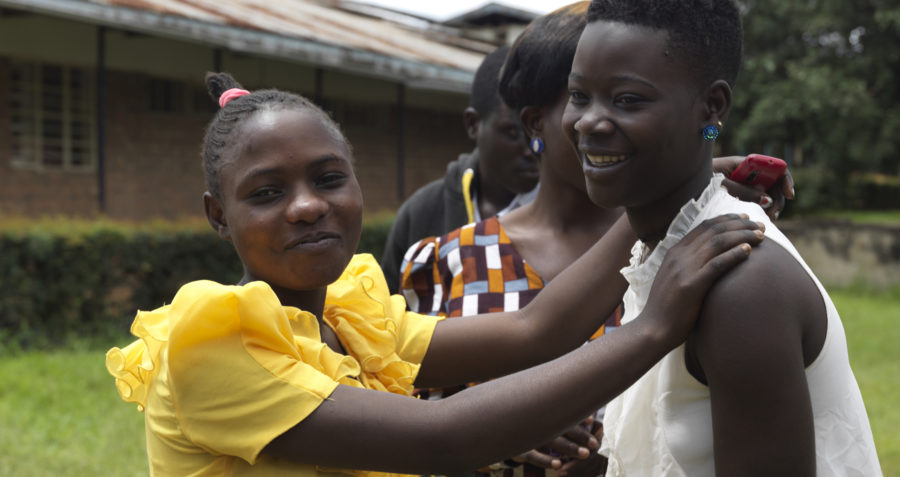Schistosomiasis: the unfamiliar disease that increases HIV risk
 © Peter Caton for READY
© Peter Caton for READY
Fresh water sources are a lifeline to so many people across Africa. And yet they can harbour parasitic worms that increase the risk of HIV for women and girls.
“Have you heard of schistosomiasis or bilharzia? Did you know that there is a link with HIV?”
This has been my opening line for many conversations over the last two years. It was (and still is) often met with a pause. Mostly the pause is people thinking about whether or not they actually know what schistosomiasis or bilharzia is, and whether or not they are going to admit that they don’t.
Let me explain.
Imagine for a moment, the reality that fresh water sources like lakes, rivers and ponds are where you bathe, wash clothes, collect water. You rely on that water source for many important aspects of life. It’s vital.
Now, consider the fact that this water could be contaminated with parasites. Parasitic worms that live in snails but go on to infect humans. Worms that burrow into the skin causing a disease called schistosomiasis. One type of which means open sores develop on the cervix and in the vagina. Sores that make women and girls more prone to HIV infection…
A short course of medication (praziquantel) kills the worms, but you’re unaware you were infected. So the worms go on laying eggs and travelling through your bloodstream to different parts of your body. A grim reality, but one that is preventable.
From worms to HIV
This link between water – snails – schistosomiasis – HIV is one that is seldom spoken about among those who work on HIV despite their obvious link.
For the last two years I have been telling everyone and anyone who was willing to listen. People working on schistosomiasis have known about this connection for 25 years and we are just waking up to it in the HIV world.
Schistosomiasis is a neglected tropical disease endemic across Africa. Anyone can become infected with the disease, of which there are two types: one that affects the gut and intestines, and one that affects the urinary, genital and reproductive areas.
It’s this second type which causes female genital schistosomiasis (FGS), which can result in open sores on the cervix and vagina, inflammation and contact bleeding among women and girls.
We know that HIV is more easily transmitted if there is an entry point for it into the body. Open sores, inflammation and exposure to blood give this easy access, similar to having a sexually transmitted infection. In fact, it means women and girls with FGS have a three-time higher risk of acquiring HIV and two-times higher risk for HPV.
We have to talk about FGS if we’re going to end AIDS
Female genital schistosomiasis is the most neglected gynaecological condition in the world. It’s thought that as many as 56 million women have FGS. That’s the entire population of Kenya. The number of people successfully treated for TB ever. The number of articles on Wikipedia.
Working on FGS can be a game changer for preventing HIV among adolescent girls and young women – might this be the missing link for HIV prevention? Not only will they have a better chance of avoiding HIV infection, they will also have a better chance of not being infected with schistosomiasis. This is a win-win situation.
We are critically aware that the UNAIDS Fast Track target of fewer than 500,000 new HIV infections per year will not be achieved (there were an estimated 1.7 million in 2018). If we’re going to end AIDS by 2030, the scale up of HIV prevention efforts needs to be massive. And we need to look at doing HIV prevention differently, including preventing female genital schistosomiasis.
How we can work together
So, how can we tackle these global health issues together? Frontline AIDS in the HIV space, with others in the neglected tropical disease space?
Learing from each other
The interconnectivity of HIV and FGS means that there are definite chances for learning exchanges. It will give us in the HIV space an opportunity to work on HIV prevention from a completely different angle – one that has both diseases in mind. We will also be able to address the impact of gender-based violence and gender inequality in a broader unified cross-sectoral approach.
Adolescent girls and young women who experience FGS symptoms (e.g. pelvic pain, vaginal discharge) often go into healthcare settings and are misdiagnosed with a sexually transmitted infection. Healthcare workers are not trained in diagnosing FGS and further stigmatise these girls and young women because of their assumed sexual activity. We know that the stigma around sexual activity, HIV and other STIs, and unintended pregnancy continue to prevent young people to access services and service providers from providing friendly services.
Building allies
With the strengthening evidence between FGS and HIV emerging, it’s clear we have to work together. We already work on integrating sexual and reproductive health and rights (SRHR) services with HIV services, so that people can access them in the same place. Now’s the time to include FGS in that mix.
Working with communities
We know that a community approach to disease prevention and treatment works. The understanding that those directly affected by HIV – communities – have the knowledge to know what they need to prevent it. Ensuring that informed decision-making is at the core of being able to demand and access services. Our experience of peer-to-peer learning and community building demonstrates that it works – and will work for schistosomiasis prevention too.
The bottom line
AIDS is not over. Aiming to eradicate schistosomiasis is a direct contributor to preventing HIV. Working together will bring us closer to zero new HIV infections sooner rather than too late.


